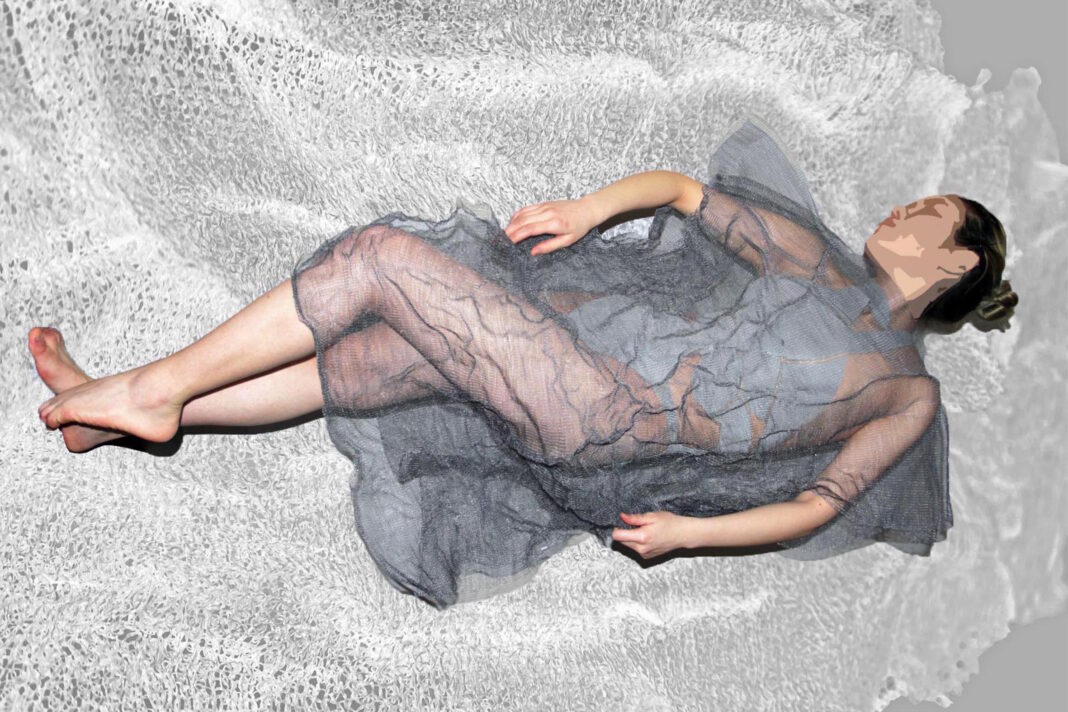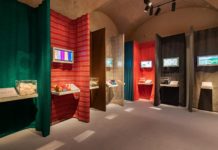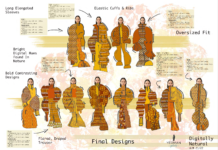London College of Fashion’s BA Fashion Textiles: Knit programme nurtures creativity and technical understanding. The breadth of vision and individuality within the course is exemplified in these graduate collections, designed by students who navigated the impacts of lockdown through intuitive problem solving.
Seth Hutchinson: ‘Somewhere in England’
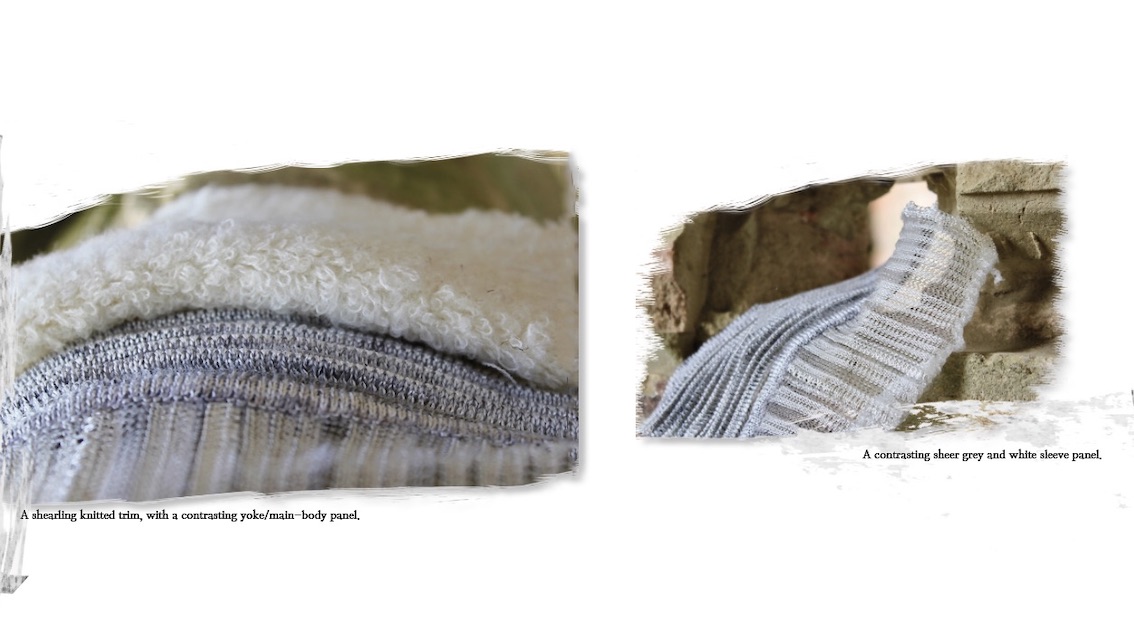
“ ‘Somewhere in England’ places focus on textural and functional design, through the lens of industrial and societal changes during the 20th century. Prioritising British sourcing and production, it implements resourceful craftsmanship, manifesting as contemporary menswear garments.”
Inspired by textures within British landscapes, ‘Somewhere in England’ is a collaborative collection between Seth and fellow LCF graduate Rob Hallett (BA Fashion Design Development). Solely responsible for the knitwear, Seth designed 3 garments. Colour pulled from the English countryside combined with wool, cashmere and merino yarns to communicate a natural narrative. Seth was grateful for the support Xinao yarns in their yarn sponsorship for some of his fabrics.
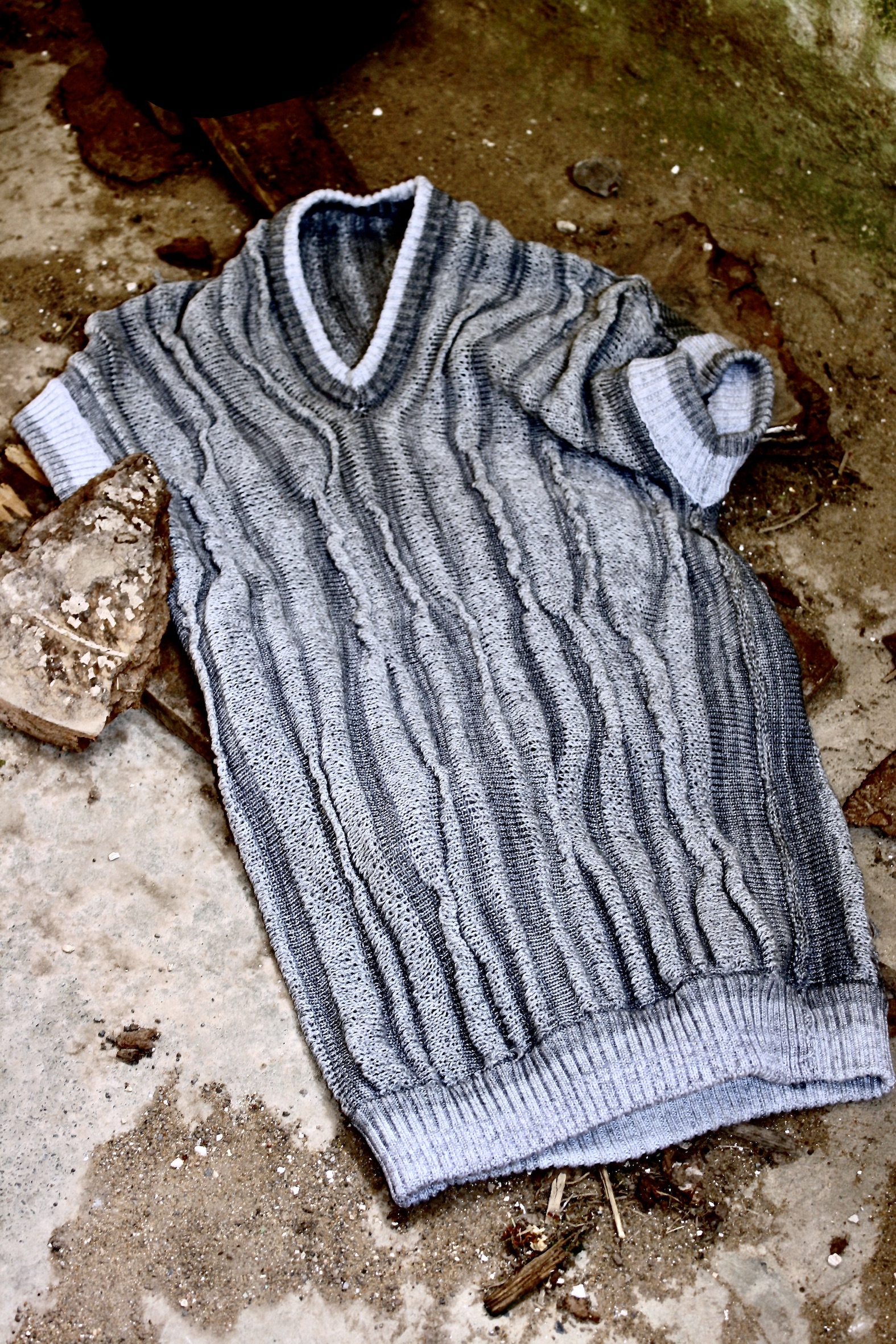
Purposefully displaying the diversity of his skills, Seth approached traditional techniques such as stitch transferring with a technical mind-set but a creative eye. Texture creation and problem solving techniques is as enjoyable for Seth as the mathematical aspects of drafting patterns. Weeks of fabric sampling took place before garments were developed, allowing Seth to achieve optimum fabric quality before draping to inspire silhouette.
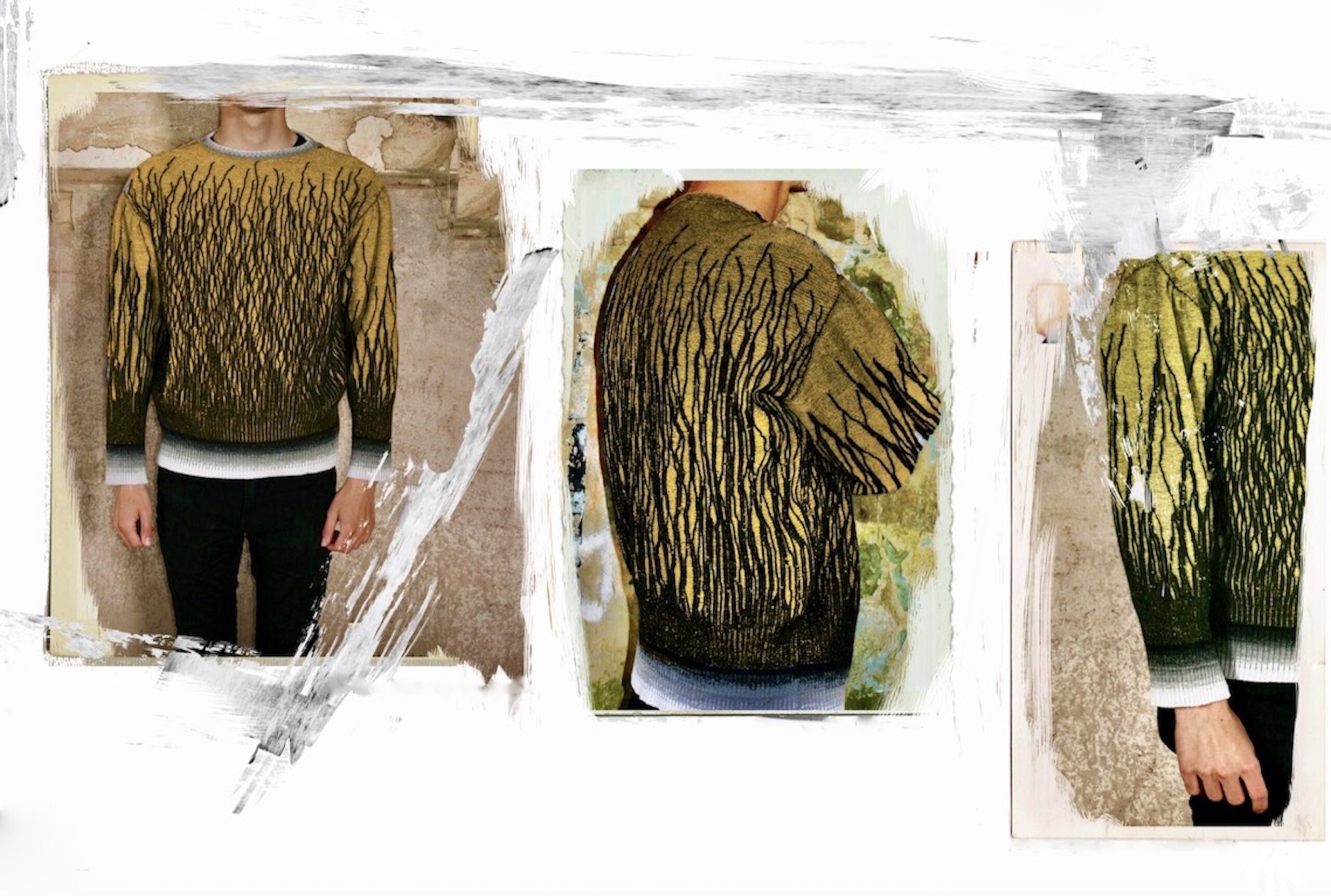
Without access to machines during lockdown, Seth refocused his creativity by curating his lifestyle and trend publication ‘Out of the Shadows, into the Light’. A thorough and disciplined designer, Seth’s body of work showcases his appreciation for the entire design process, from trend and imagery inspiration through to garment finishing.
Seth’s collection can be viewed in more detail here.
Zhiwei Hong: ‘Knit, as a unit’

“I am inspired by the incremental progression in product design from designer aspect, and the resourceful manipulation of existing products by users. This can be expressed by a Hindi word ‘Jugaard’, which stands for low-tech innovations that fix the problems and bend the rules.”
Zhiwei’s ambition of product merging is realised within ‘Knit, as a unit’ through analysing knitted structures and intervening through stitch (unit) creation using 3D printing. Industrial design methodology and frugal engineering heavily informed her processes as she endeavoured to generate a “common language” between fashion and the electronics industry, whilst preserving softness in utility.

Zhiwei first experimented by knitting with conductive materials such as wire. Discovering this limited fabric handle, she trialled conductive yarns. Still not satisfied with the drape, it was a workshop at the LCF Digital Learning Lab that introduced her to 3D printing knitted stitches; this was revelatory. Zhiwei’s realisation that the hollow space between each printed loop could house the components for wearable technology was an important milestone.
Knitting textile bases with linens and elastics on Dubieds, Zhiwei experimented with lace hole placements and jersey stitches. 3D printed motifs were then printed onto these bases in PLA filament. Her cable knit jumper was made in this way, with cable stitches taking a total of 94 3D printing hours; this was a significant prototype for Zhiwei’s wearable tech vision.

During lockdown, Zhiwei’s learned rendering skills to optimise her designs. Taking charge of programming her technology by learning to code is Zhiwei’s ambition, along with collaborations with product designers to explore fabric outcomes when approached from a ‘non knitter’ perspective.
Zhiwei’s research process has culminated in a precious collection of knowledge that she will take to her MA in Soft Systems at the Royal College of Art. This graduate collection is really just the beginning.
Zhiwei’s collection can be viewed in more detail on artsthread.
Urmila Rai: ‘Irregularities’
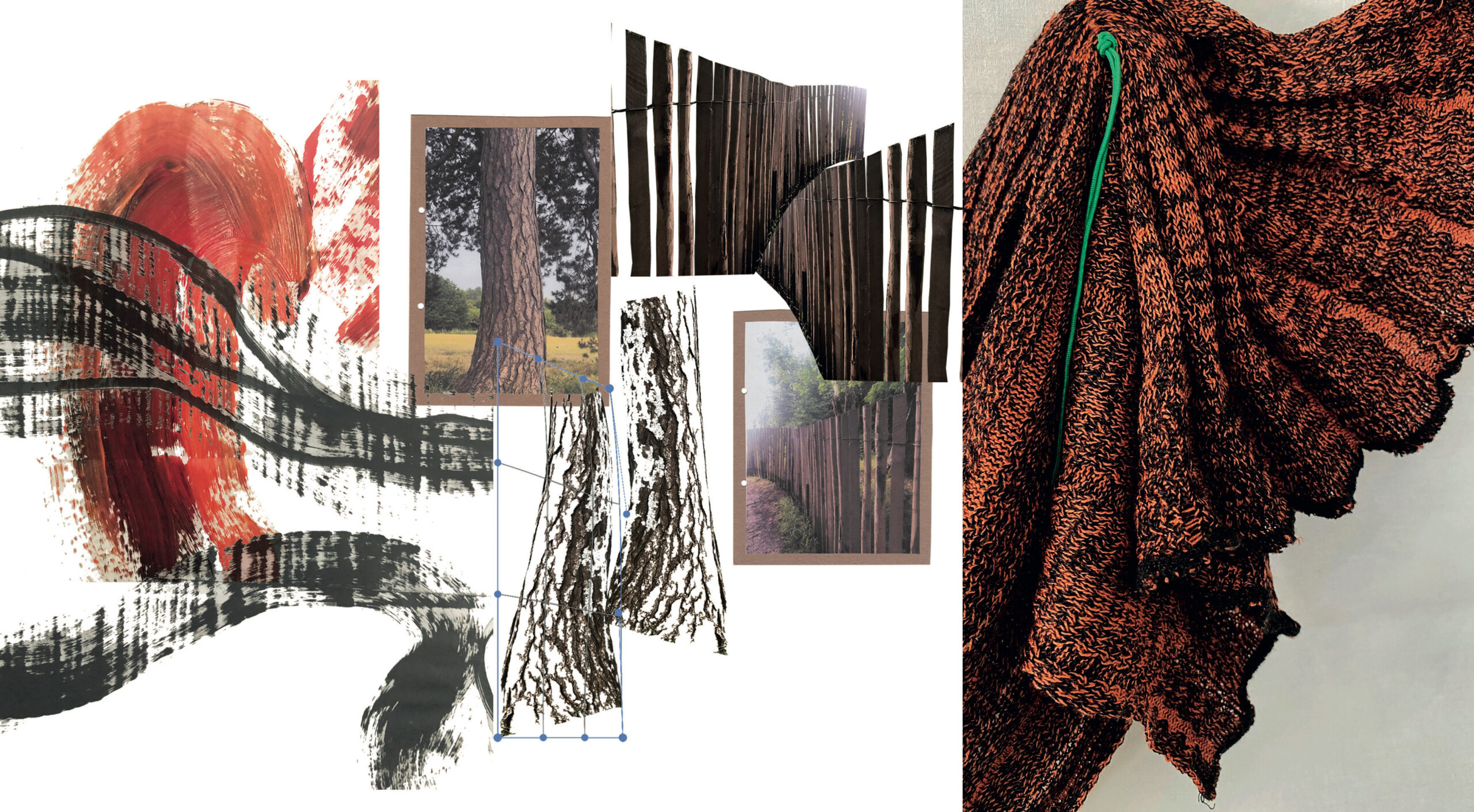
“I have an unconventional thought process when designing. I manipulate ‘simple’ knit techniques to create unique wearable structures.”
Approaching knitwear unconventionally, Urmila’s multi gauge textiles lead garment silhouettes through draping processes. ‘Irregularities’ began with research into the lyrical, geometric works of artist Anna Maria Maiolino, which informed Urmila’s own large-scale free and fluid drawings. Drawing and mark making creates foundations for her projects by generating colour, yarn, and textural inspiration.
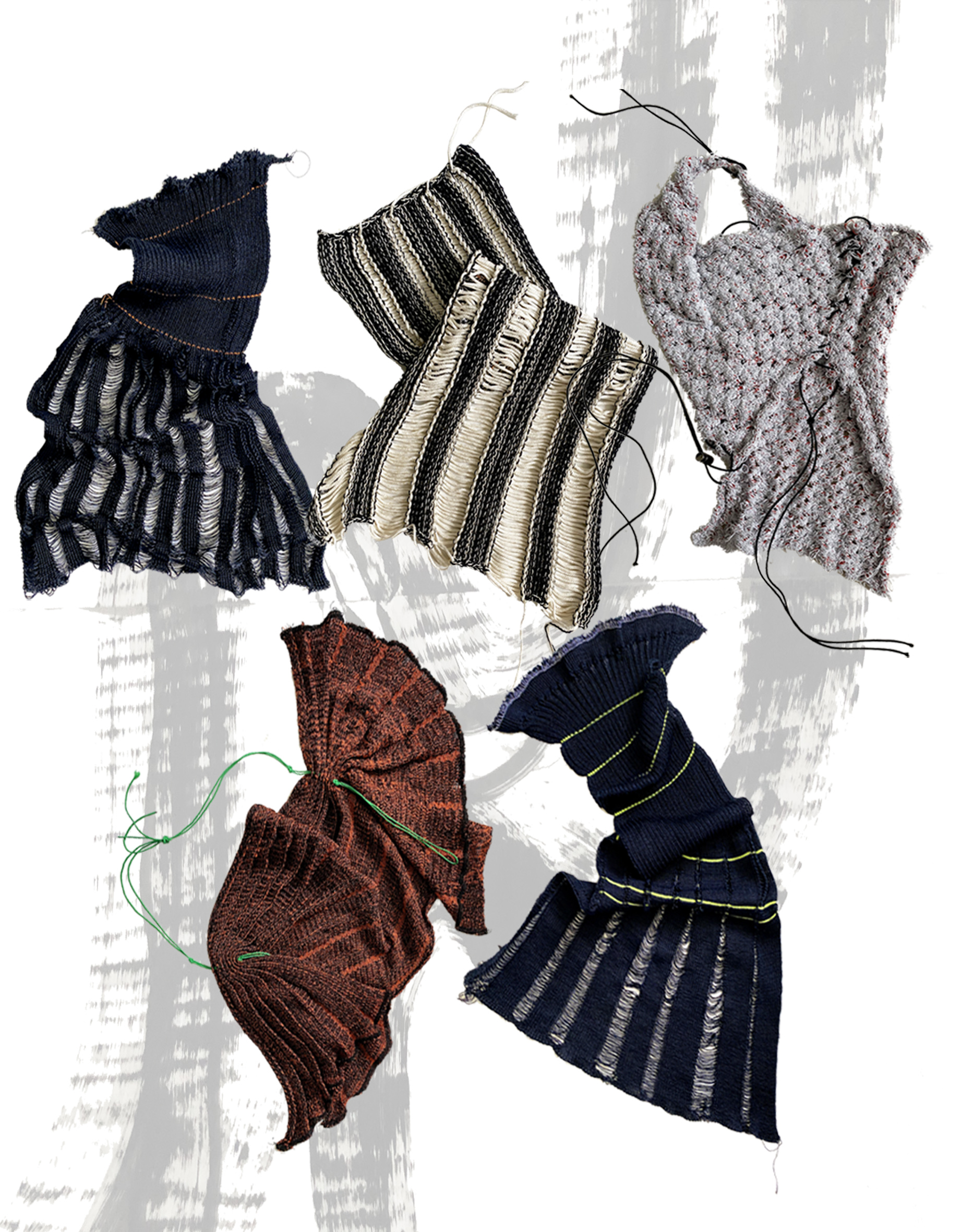
Yarns in Urmila’s material palette have their own “behaviors”, emulating the freedom of her art works in their knitted drape. Cottons combined with fancy yarns, viscose and lycra generated lively contrasts when knitted on domestic and Dubied machines. Combined with techniques such as ladders, these yarns caused distortion of traditionally identifiable stitch structures, resulting in abstracted fabrics.
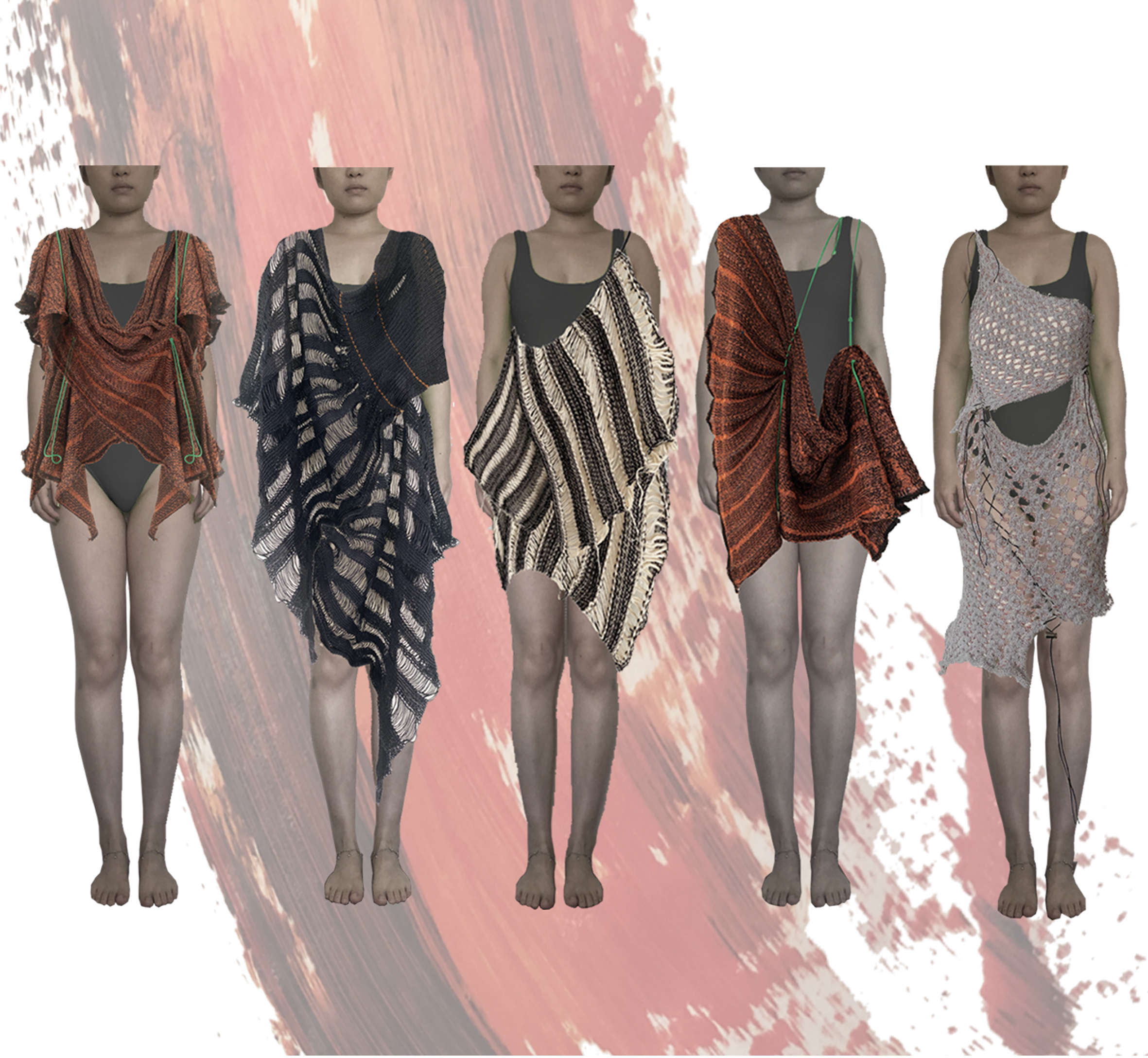
Translating her handwriting on paper into fabric speaks to Urmila’s inherent ability to make creative connections, creating natural synergies between primary research and fabric outcomes. Urmila is looking forward to gaining more industry experience with a garment focus, and utilising her knitwear knowledge.
Urmila’s collection can be viewed in more detail here
Lian Liu: ‘En Route’
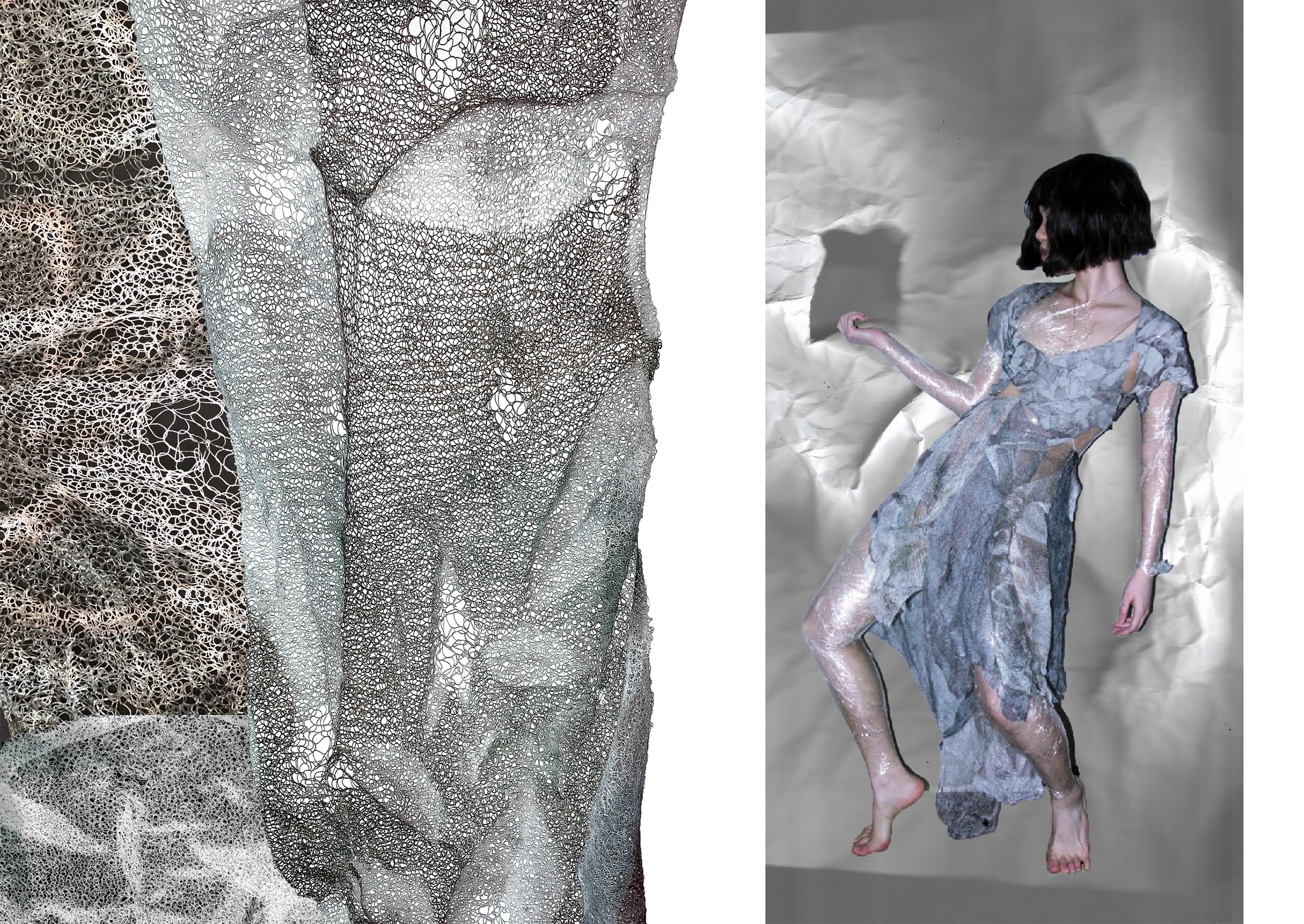
“I gave up the precisely measured or mathematically laid out forms of traditional knitting. Instead, I was open to new possibilities no longer limited by regulated rules or techniques.”
Lian’s graduate collection comprises of 3 capsule collections, each featuring a different approach to fabric manipulation. ‘Liquefied’ explores fluidity in materials, whilst ‘Creased Chaos’ explores accidental encounters produced through heat pressing fabrics. The third capsule ‘Coated knits’ explores adding additional layers to knits, defining her collection with a truly mixed media approach.
Lian’s distinctive tonal palette echoes the liquid narratives of her primary research Viscose, beading string, elastics and TPU tapes made up some of her material palette, selecting materials based on post machine reactions to her mixed media applications..
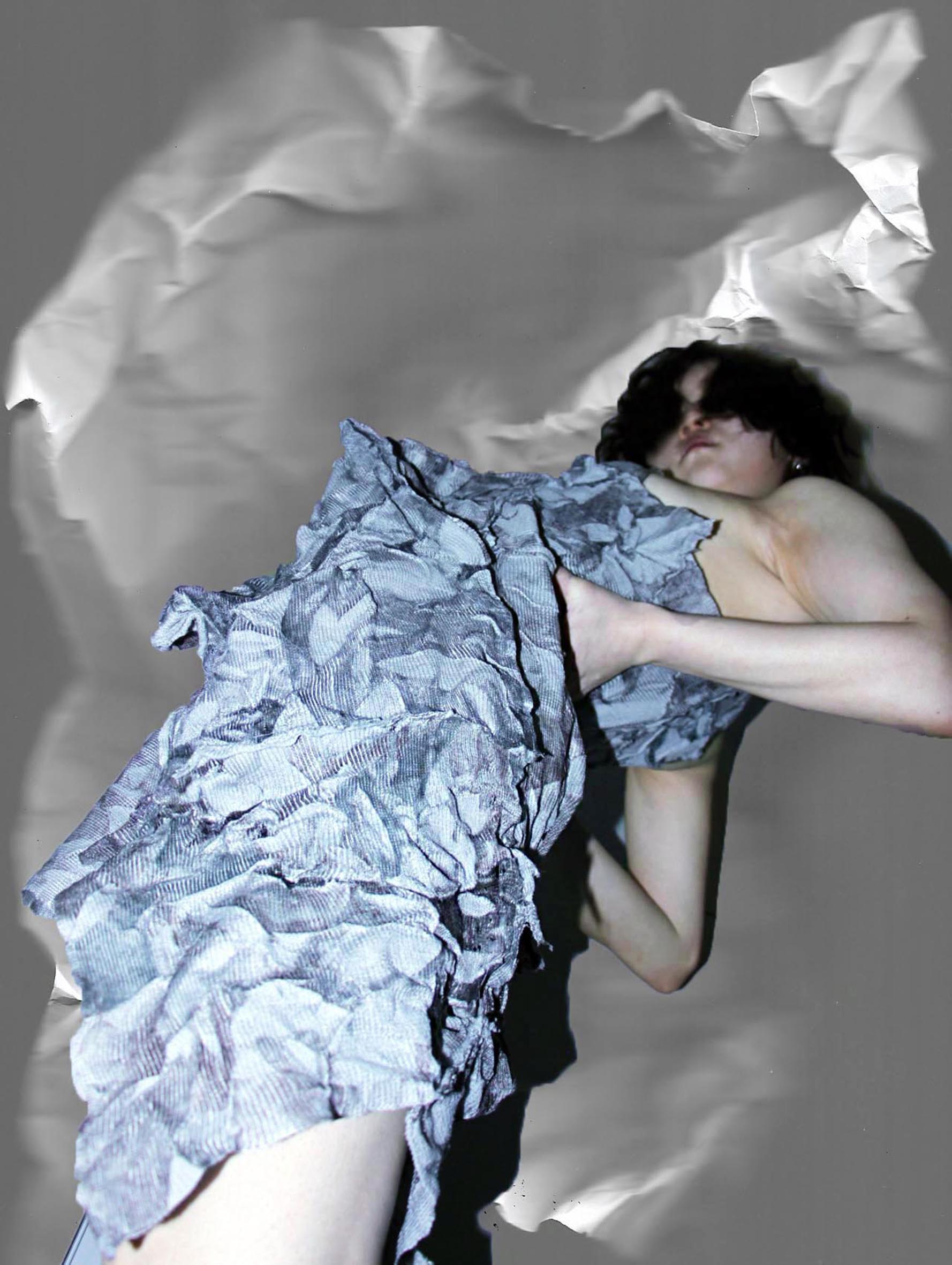
Once free from the constraints of machines, Lian applies her refined mixed media processes to her knitted fabrics. Developed through experimental sampling to achieve the perfect temperature and material combinations, she explored processes of physical transformation such as melting, dissolving, cutting, freezing, burning, creasing and shrinking. Allowing accidental outcomes within the controlled environment of her refined processes, Lian explained, “Almost no fabrics look the same even if they were applied with the same procedure, and this is what fascinates me.”
Lian aims to develop industry experience in material development, maintaining a textile, tactile focus. A bursary award from ‘The Worshipful Company of Framework Knitters’ for her graduate collection recognised and celebrated Lian’s creative and professional potential.
Lian’s collection can be viewed in more detail here.
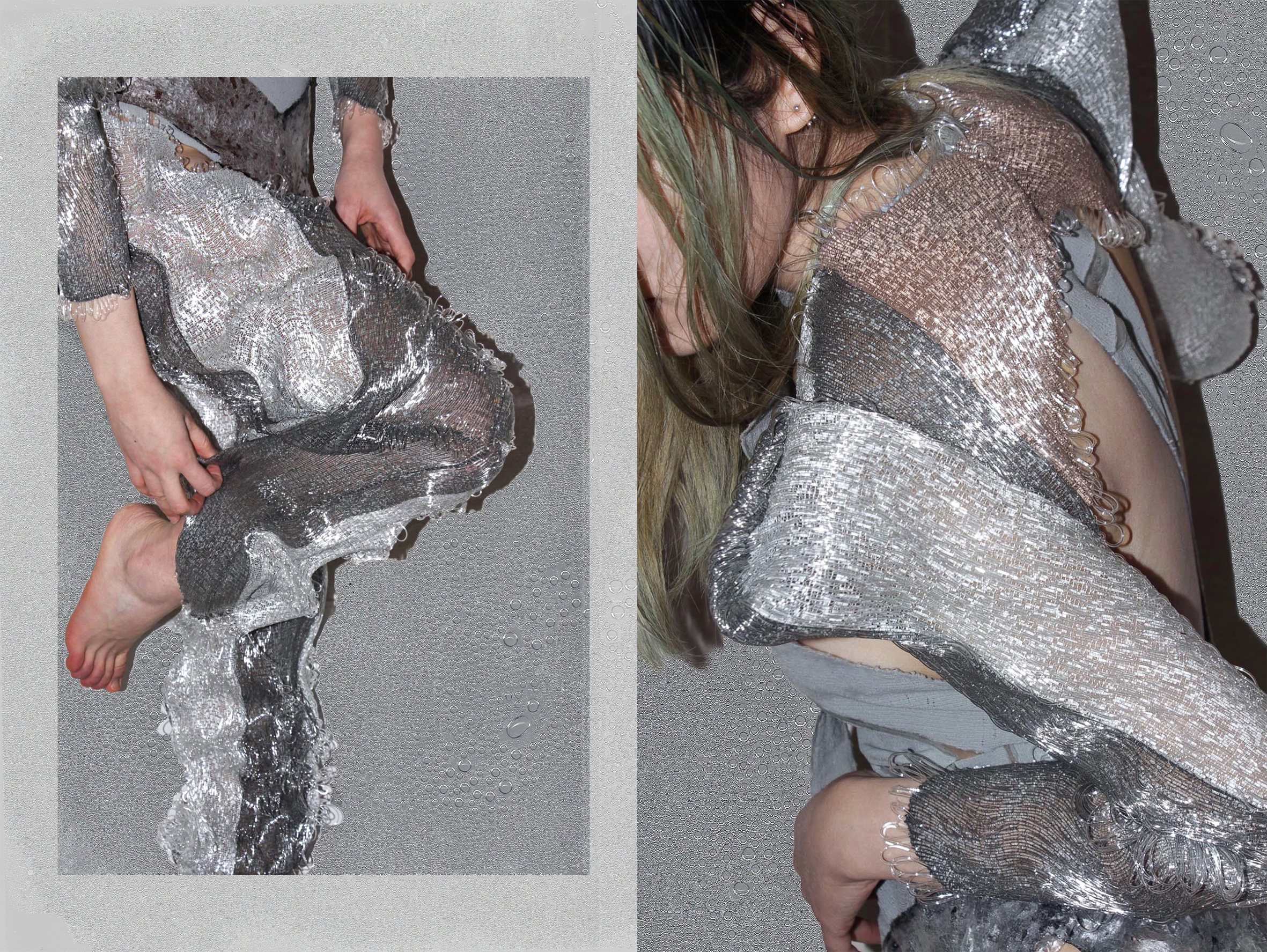
Launching on the 27th of July, LCF will be participating in the UAL virtual collaboration showcase created by IBM, providing opportunity to see the work of many more of their class of 2020.

Subscribe To Our Newsletter
Join our mailing list to receive the latest news and updates from our team.


